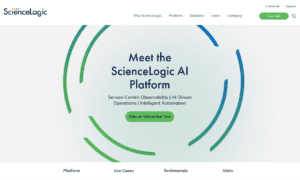In the dynamic space of electric vehicles, where innovation redefines itself daily, Tesla is a powerful case study in the coalescence of automation technology and customer experience. Behind every feature is a mission to transform customers’ engagement with Tesla’s product offerings, from visualizing their ideal car to customizing financing options. However, the magic lies in making this process as intuitive and informative as possible.
Essentially, this involves more than just showing customers their options. It is about building trust through transparency and efficiency so that every decision they make feels well-informed and seamless.
Navigating Change with Data-Driven Precision
Today, Tesla’s vehicle configurator is far more than a customization tool; it is a data-rich environment where customer preferences meet state-of-the-art automation. That said, the configurator has become a critical revenue driver, directly shaping around 80% of Tesla’s sales. The company’s team has seen the platform evolve to feature product launches and promotional programs, such as the recent Cybertruck Foundation Series configurator launch, the Uber partnership, and financing options like 0% APR and $0 due at signing.
The configurator’s intelligent systems offer transparency on pricing and specifications and allow customers to explore product variations with real-time feedback on availability and financing.
It is common knowledge that customers want a seamless, informed experience when making such a significant purchase. That said, the brand’s configurator is designed to keep up with those expectations, but it even appears to exceed them, more often than not. If a customer wants a car sooner, the team will recommend a similar model for quicker delivery; if they need more information on a financing option, automation can point them in the right direction.
The Earlier, the Better
The development of an “Earlier Pickup Available” feature epitomizes customer satisfaction through automation. This tool scans delayed orders and suggests options with matching configurations, offering customers a faster pathway to ownership. The self-service model within the Tesla app was born by implementing recommendation algorithms. The configurator has become central to Tesla’s quarterly delivery targets, an achievement that the team is particularly proud of—given the logistical challenges of scaling electric vehicle production and sales.
Going the extra few miles outside of the U.S., the best of today’s software automation can be found in the Price Acceptance System, a service especially engineered for Turkey. With exchange rates fluctuating unpredictably, developing an automated pricing system that adjusts vehicle prices based on real-time foreign exchange rates was of the essence. This innovation—which allows Turkish customers to confirm or decline the final price on the app—illustrates the commitment to responsive, adaptive technology. Currency instability should not have to make the experience more stressful for customers. This is why this system provides a sense of stability and transparency for customers traversing an unpredictable market.
Reinventing the Wheel of Customer Experience
The pursuit of innovation within Tesla’s digital customer journey is ongoing and neverending. The future of electric vehicle sales is enveloped in its potential for further enhancements in automation, predictive analytics, and AI-driven personalization.
Ultimately, customers are looking for transparency, simplicity, and speed. If industry aces continue to provide that, then the future of automotive sales is on the fast track to new, and improved customer experience.



































